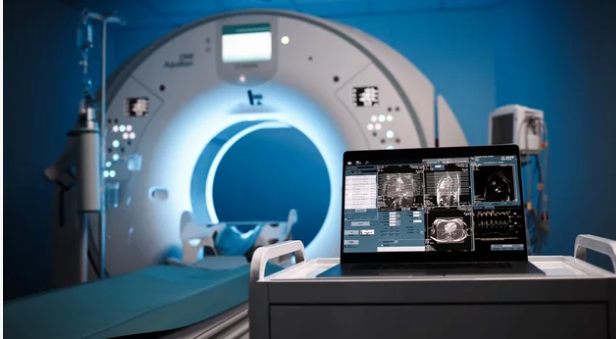Magnetic Resonance Imaging (MRI) has become a cornerstone of modern cancer care. Known for its ability to produce highly detailed images of soft tissues without using harmful radiation, MRI plays a crucial role in early detection, diagnosis, and monitoring. While it is often used in hospitals and private clinics, MRI is also increasingly integrated into public health programs as part of large-scale cancer screening initiatives.
This article explores how public health programs use MRI for cancer screening, the challenges they face, and the potential for expanding MRI access to improve cancer outcomes worldwide.
The Role of MRI in Cancer Detection
MRI is not the first-line screening tool for most cancers, but it is particularly valuable when other imaging methods—such as mammography, ultrasound, or CT scans—are not sufficient. Its advantages include:
- High sensitivity: Detects tumors in soft tissue that may be missed by other imaging methods.
- No radiation exposure: Safer for repeated use compared to X-rays or CT scans.
- Detailed imaging: Helps differentiate between benign and malignant tumors.
- Guidance for treatment: Provides precise data for surgery, radiation, and chemotherapy planning.
Because of these strengths, MRI is often targeted toward high-risk populations within public health programs.
How Public Health Programs Use MRI in Cancer Screening
1. Breast Cancer Screening for High-Risk Women
Public health programs in many countries recommend breast MRI for women at high risk of developing breast cancer. This includes women with:
- BRCA1 or BRCA2 gene mutations.
- A strong family history of breast cancer.
- Previous radiation therapy to the chest at a young age.
MRI is used alongside mammography to improve early detection rates. For these women, breast MRI is often offered annually as part of government-supported screening programs.
2. Brain and Central Nervous System Cancers
Some public health initiatives provide MRI screening for individuals with genetic conditions linked to brain tumors, such as Li-Fraumeni syndrome. MRI can detect small tumors before symptoms develop, giving patients a better chance of early treatment.
3. Prostate Cancer Programs
While prostate cancer screening traditionally relies on prostate-specific antigen (PSA) blood tests, MRI is increasingly used to reduce unnecessary biopsies. Public health systems in some countries, such as the UK, are adopting multi-parametric MRI (mpMRI) as part of their prostate cancer screening strategies.
4. Pediatric Cancer Surveillance
For children with genetic predispositions to cancer, public health programs sometimes include regular MRI scans to monitor early signs of tumors. This approach helps reduce radiation exposure, which is especially important in pediatric populations.
5. Research-Based Screening Initiatives
In some regions, public health programs use MRI as part of research studies to evaluate its effectiveness in broader cancer screening. For example, whole-body MRI is being tested for early detection in individuals with high genetic risk for multiple cancers.
Benefits of Using MRI in Public Health Cancer Screening
The integration of MRI into public health programs offers several important advantages:
- Early detection for high-risk groups: MRI often finds cancers at earlier stages, when treatment is more effective.
- Improved survival rates: Earlier treatment improves patient outcomes and reduces mortality.
- Better resource allocation: Detecting cancer early can reduce the long-term costs of late-stage cancer treatments.
- Reduced reliance on invasive procedures: MRI helps identify when biopsies or surgeries are truly necessary.
Challenges in Expanding MRI for Public Health Use
While MRI is powerful, its widespread use in public health programs faces significant barriers:
1. High Costs
MRI machines are expensive to purchase and maintain. The cost of each scan is also higher compared to mammograms or ultrasounds, making it difficult for some public health systems to provide MRI on a large scale.
2. Limited Availability
Rural and low-income areas often lack access to MRI machines. Patients may need to travel long distances, delaying care.
3. Workforce Shortages
Skilled radiologists and technicians are needed to perform and interpret MRIs. Many health systems face shortages of trained personnel.
4. Risk of Overdiagnosis
High sensitivity can sometimes lead to the detection of tumors that may never become life-threatening, causing unnecessary anxiety and procedures.
5. Policy and Infrastructure Gaps
In many countries, public health programs do not yet have formal guidelines for integrating MRI into cancer screening, leading to inconsistencies in care.
Global Examples of MRI in Public Health Programs
- United States: The American Cancer Society recommends annual MRI screenings for women at high risk of breast cancer, often covered by public and private insurance.
- United Kingdom: The National Health Service (NHS) has incorporated MRI into prostate cancer diagnostic pathways, with ongoing trials to expand its use in screening.
- Canada: Provincial health programs offer MRI breast screening for high-risk women as part of public healthcare.
- Low- and middle-income countries: Access is limited, but international organizations and partnerships are working to introduce mobile MRI units and subsidized services.
Future Directions: Making MRI More Accessible in Public Health
Several trends may help expand the use of MRI in public health cancer screening:
- Portable and low-cost MRI machines: Emerging technology could bring MRI to community clinics.
- Artificial intelligence (AI): AI tools can speed up image analysis, reducing costs and easing the burden on radiologists.
- Policy reforms: Governments may expand funding and insurance coverage for MRI screening in high-risk populations.
- Global health partnerships: Collaboration between high-income and low-income countries can help distribute resources more equitably.
Conclusion: A Critical Tool for Targeted Cancer Screening
MRI is not designed to replace traditional cancer screening tools like mammography or CT scans for the general population. However, it is a critical addition to public health programs for high-risk individuals and specific cancer types. By integrating MRI into targeted screening strategies, public health systems can improve early detection, save lives, and ultimately reduce the economic burden of late-stage cancer treatment.
The challenge now is ensuring equitable access. With thoughtful investment, policy reform, and global collaboration, MRI can become a cornerstone of cancer screening—not just in wealthy nations, but worldwide.
Also Read :
